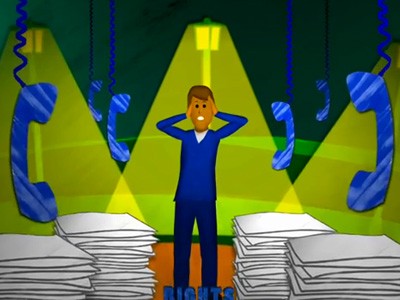Credit card debt is down; medical debt and student loans are up, and the median net worth of Americans is still far below levels of 10 years ago. Another interesting development: The category of people over age 65 was the only age group where the likelihood of holding debt actually rose over the course of the study.
Here’s a link to the (PDF) complete study, “Household Debt in the U.S.: 2000 to 2011,” whose eight pages will make handy reference for future stories on consumer debt. While unsecured debt, including credit card tabs, are not the bulk of household debt, you still might try talking with credit counseling services about any demographic shifts they are seeing among troubled borrowers; are more seniors seeking help with bills?
Check with lenders, title companies and even hospitals about patterns they see among borrowers. Reports last year said that people over age 60 still owe $36 billion in student loans, and that some Social Security checks are being garnished to recapture the delinquent funds. I wonder how many more are having tax refunds seized this time of year to offset unpaid student loans.
And while the debt report is interesting in and of iteself, it also got me to pondering “Who benefits?” One way to put a different spin on the story of consumer debt is by taking a look at the state of the collections industry, and how the ebb and flow of consumer borrowing affects the third-party collectors and related companies.
It’s a $13 billion industry, according to market research IBISWorld, with players ranging from national giants to local operations. ACA International, the trade association, offers a lot of resources on its website including a link to its state units, who may be able to help you find members. Here’s what the industry says about its own impact on the national and state economies; it’s a 23-page PDF with some intriguing statistics. Collections Industry News, a trade journal, also offers quite a few good story nuggets.
Here’s an eye-opening Bloomberg report from earlier this year about debt collectors posing as Facebook friends; the Consumer Financial Protection Bureau is reviewing debt collection practices and says one in 10 Americans have accounts in collections. That seems very high but is borne out by this quarterly report on Household Debt and Credit by the Federal Reserve Bank of New York; the notes say most debt in collections is comprised of medical bills or utility bills. Both are specialty collections accounts that have inspired niche collections businesses; see the NCO Group, for example, that focuses on utility bills. And here’s a New York Times story that garnered a lot of attention last year, about debt collectors that are allowed to approach sick patients in hospitals. By contrast, this article profiles a doctor who founded what purports to be a compassionate medical debt collection service, Debt M.D. Collection of auto loans (and related repossession firms) is another niche you could profile.
For ease of refrence, here’s a link to the Federal Trade Commission’s Fair Debt Collections Practices Act page; you can review the law that governs third-party collectors there and related publications, though most aren’t very up-to-date. You might also check with your state’s attorney general about any ongoing debt collection scams.










